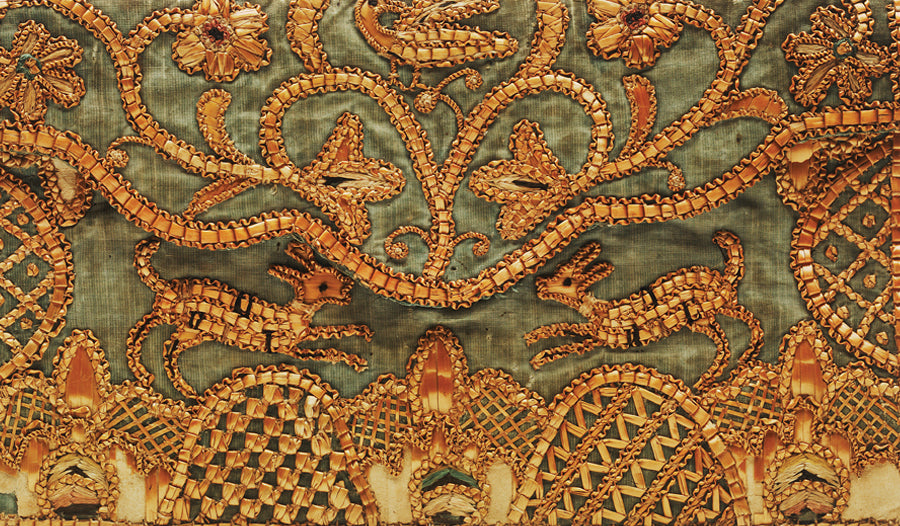
Turning Straw into Gold

An agricultural byproduct consisting of the dry stalks of cereal plants after the grain and chaff have been removed, straw is one of the most abundant ‘waste’ materials on the planet. During harvest season, it makes up about half of the yield of cereal crops such as barley, oats, rice and wheat and, as such, is extraordinary in the diversity of its practical applications.
We’re very excited for our upcoming online talk, Harvest, in which our speakers, all of whom still work closely with the materials that harvest provides, will discuss the many uses of straw in arts, crafts and adornment.
One of our speakers, Veronica Main, will share her extensive knowledge of straw work, which covers a range of decorative straw techniques including corn dollies and, more recently, straw hat plaiting. She will draw in her strong historical knowledge of the subject and practical experiences of straw work. Veronica wrote the article Turning Straw into Gold, in the latest issue of Selvedge, in which she discusses the history of straw’s use in adornment. Read on for excerpt of the article:

Dior used the intriguing materials of raffia and straw sequins to decorate Princess Margaret’s 21st birthday dress. Raffia is soft and flexible, but to transform a stiff stem of straw into a stunning adornment is more surprising. The use of straw as a textile fibre has confused and fascinated for generations.
Straw was used to embellish ecclesiastical vestments and altar frontals in the late 1600s, and at first glance it is difficult to distinguish the straw from more conventional metal thread work. These extraordinary surviving pieces are attributed to the work of nuns in the village of Nozeroy in south-eastern France. The narrow strands of straw are worked to imitate gold work stitches. Within parts of the design, fine grass-like straw stems have been plaited into delicate lengths, then attached to form flowing patterns. Some sections look like sheet gold, an effect achieved by splitting, flattening and softening the straw before gluing it to a lightweight, supple background. This creates a soft, flexible veneer that can be cut to shape before being couched in place. The work was not confined to France, as examples also survive in Switzerland.

Perhaps the most well-known reference appeared in the European Magazine and London Review column written by ‘Cecelia Bonnetbox’ during 1783. ‘Straw! Straw! Straw! Everything is ornamented with straw from the cap to the shoebuckle, and ... not only the female but the male part of the fashionable world, for the gentlemen’s waistcoat are ribbed with straw.’ Many surviving examples of hats, reticules, letter cases and shoes bear testament to the longevity and beauty of straw.
Find out how to read the rest of the article in Issue 101 Grow.
Book tickets for our Harvest online talk here.
